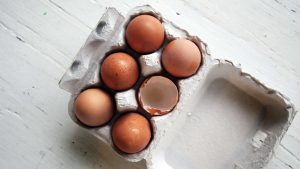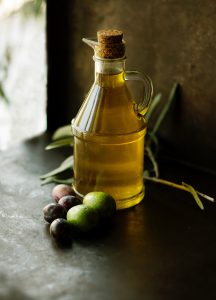What makes a diet keto is that it restricts carbs enough to exhaust the glycogen supply in the liver,  requiring the body to tap into fat as fuel. It is moderate protein because protein can’t be stored and is transformed to glucose if overeaten. There are no foods specifically prohibited, but it is pretty impossible to get & stay in ketosis if you eat sugar, grains and starches of any kind. If a person eats this way long enough (minimum 8 weeks) they become keto-adapted meaning their body is now preferentially burning fat over glucose and that is where the serious health benefits really begin.
requiring the body to tap into fat as fuel. It is moderate protein because protein can’t be stored and is transformed to glucose if overeaten. There are no foods specifically prohibited, but it is pretty impossible to get & stay in ketosis if you eat sugar, grains and starches of any kind. If a person eats this way long enough (minimum 8 weeks) they become keto-adapted meaning their body is now preferentially burning fat over glucose and that is where the serious health benefits really begin.
Classic Keto
A classic keto diet is 75-80% fat, 15-20% protein (typically 50-75 grams a day) and 5% carbs (generally 30 grams a day or less). The best way to do it is to calculate your protein requirement first then eat fat to satiety. Generally speaking, you don’t need to try to eat carbs. It is easy to get to 5% just from avocado, a few nuts and a few leafy greens.
If the benefits of ketosis are the goal, then testing for ketosis is important. The best methods for testing are blood (Precision Xtra – like testing for blood sugar ) or breath (ketonix breath analyzer). The urine strips only work for the first few weeks because once you are keto adapted, the ketones are used and don’t make it to the urine.
Low Carb, but Not Keto
Any diet that eliminates sugar and grains will be anti-inflammatory and therefore offer healing. Cholesterol is so necessary for the body that the liver ceases to function properly in the context of a low fat diet because its full-time job becomes making cholesterol to meet the brain’s minimum requirements. By  adding back the fat, the liver can return to detoxing the body and by eliminating the sugar and grains, hormonal fluctuations and insulin resistance (the real sources of the problems we associate with cholesterol) can begin to heal. Going keto accelerates this process. A person can cut grains and sugar (they might be eating potatoes or carrots) and not get into ketosis, but feel really good and reap a lot of benefits.
adding back the fat, the liver can return to detoxing the body and by eliminating the sugar and grains, hormonal fluctuations and insulin resistance (the real sources of the problems we associate with cholesterol) can begin to heal. Going keto accelerates this process. A person can cut grains and sugar (they might be eating potatoes or carrots) and not get into ketosis, but feel really good and reap a lot of benefits.
In Summary
What makes a diet keto is low carbohydrates (just from vegetables and nuts, about 5%), moderate protein (15-20%) and high fat (70-80%). It is NOT a calorie restricted diet at all. In future posts, I will discuss why and how eating this was is very nutrient dense; health conditions that benefit from eating keto and “varieties” of keto diets.




WoW Michelle! This is I teresting to learn about. I look forward to reading more
Thanks for following Lauren! I am very passionate about keto. Ask away!